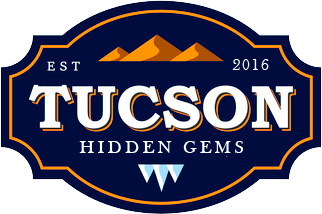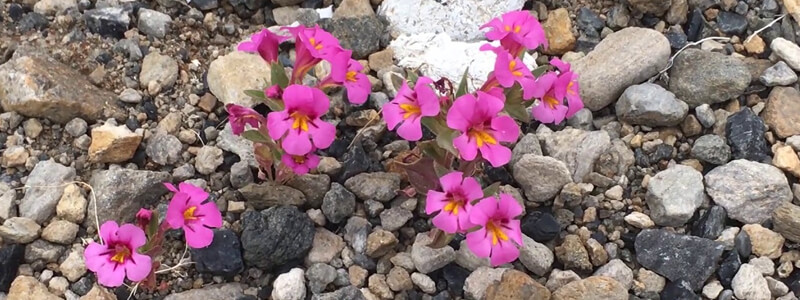Colorful Desert Spring Flowers are Abundant in March & April
With decent winter rains from November through February, the Sonoran Desert around Tucson explodes with color in March and April.
The Sonoran Desert is often thought of as hot, dry, dusty, and colorless. On the contrary, it is often lush with greenery, including mesquite, greasewood, palo verde, cholla, and saguaro. Many of these trees, shrubs, and cacti bloom at different times of the year, adding a beautiful palette of white, yellow, red, and blue. The wide swaths of spring wildflowers are even more spectacular and breathtaking.
Tucson, Arizona, and the Sonoran Desert
Tucson, home of the University of Arizona, lies at 2,000 feet above sea level. The city is ringed by several mountain ranges, including the Santa Catalinas, with Mt. Lemmon at 9,157 feet, the Rincons, Tortolitos, and Tucson Mountains. Closer to Mexico than nearby Phoenix, Tucson combines colonial Mexican architecture with elements of the wild west. Tucson also lies along the northeastern edge of the Sonoran Desert, which sweeps broadly south and west through Arizona and deep into Mexico.
The Sonoran Desert covers 120,000 square miles of Arizona, California, Sonora, and Baja California. Plantlife in the desert is extremely varied, ranging from the familiar Saguaro cactus of southeastern Arizona to the strange Boojum trees of Baja California, and includes more than 2,000 native plant species. The desert is also rich with mammals, birds, reptiles, and insects, and includes Jaguars just south of Arizona in the Mexican state of Sonora. Spring wildflower bloom is dependent upon winter rainfall and is skimpy in dry years. Wet winters, however, produce spectacular wildflower displays that draw visitors from far and wide.
Desert Wildflower Destinations Northwest of Tucson
Some of the best wildflower displays near Tucson can be found in the northwest, beginning in Oro Valley, through Catalina State Park, north on Highways 77 and 79, and west on Park Link Drive to Interstate 10 and Picacho Peak. To sample the entire area, drive north from Tucson on Oracle Road (Highway 77). Roadside stands of Mexican gold poppies, Coulter’s, or Desert lupine, Brittlebush, Desert marigold, and Scorpionweed begin appearing as the road drops down to Pusch Ridge Drive and the Rooney Ranch Shopping Center. These cut-bank flower beds become extensive as the road rises to the stoplight entrance into Oro Valley Marketplace Mall. This light also marks the entrance into Catalina State Park, arguably the best place to see flowers, and worthy of a full day’s visit.
North from the park, flowers remain prevalent along the roadsides as well as into the scrub brush beyond. From the small community of Catalina, continue along Highway 77 to Oracle Junction, about two miles past SaddleBrooke. At Oracle Junction, turn left onto Highway 79, the Pinal Pioneer Parkway. Desert lupine is abundant along Highway 79, nearly the full 42 miles to Florence, and the Pinal Pioneer Parkway is a scenic drive at any time of the year.
However, more wildflowers can be found along a less-traveled route by turning off the Pinal Pioneer Parkway ten miles from Oracle Junction, onto Park Link Drive. This left turn continues west through the beautiful Sonoran Desert habitat, dropping from 3,300 feet to 1,900 feet in the 18-mile drive to Interstate 10. Wide swaths of lupine can stretch for three or more continuous miles along this paved scenic drive, and there are ample opportunities to pull off to take photographs. Mallow, Mexican gold poppies, penstemon, and prickly poppy are also found along the roadsides. Saguaro cactus are abundant, and Picacho Peak is visible in the distance.
At Interstate 10, turn right onto a frontage road that is lined with Desert globemallow, leading to Picacho Peak State Park 6 miles north. Picacho Peak park is a popular destination for spring wildflowers and offers an excellent place for a picnic lunch. There are a number of trails within the park, as well, including a tough 1,500-foot climb to the peak for ambitious hikers. After leaving the park, a frontage road on the west side of I-10 leads a short distance to Rooster Cogburn’s Ostrich Ranch. Photogenic wildflower stands are prevalent along this short road, as well, lying between the road’s fence and Interstate 10. Feeding ostriches and a close encounter with Lorikeets can cap off the day’s adventure.
Sonoran Desert Spring Wildflowers
With average winter rains, the Sonoran Desert bursts into bloom in March and April. Some of the most photogenic areas to find flowers lie to the northwest of Tucson, from Oro Valley to Picacho Peak State Park.

